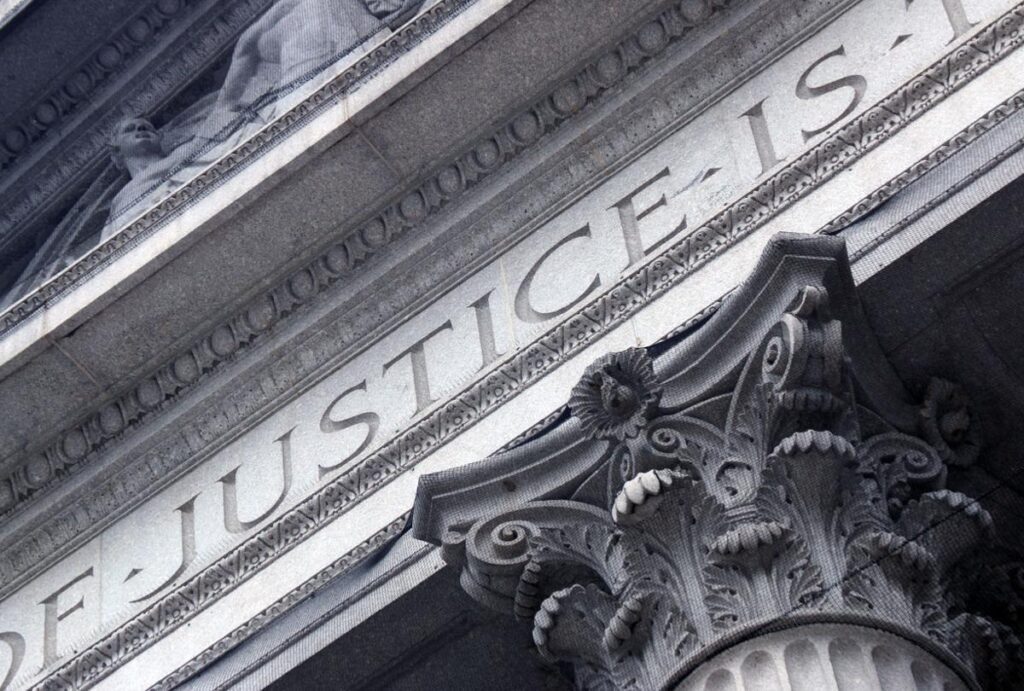Court won’t require Colorado Judicial Department to turn over sex harassment allegations

The Colorado Judicial Department won’t have to provide documents about allegations contained in a memo outlining instances of judicial sexual harassment as part of the discovery for a racial and age discrimination hiring case, a federal magistrate judge ruled on Wednesday.
A Black lawyer had sought the documents in her federal lawsuit that alleges the Colorado Supreme Court engaged in racial and age discrimination when it declined to hire her as a rules attorney.
Michele Brown, a 66-year-old Black lawyer who filed the lawsuit, still can depose former Colorado Supreme Court Chief Justice Nathan “Ben” Coats and current Colorado Supreme Court Justice Richard Gabriel and current Colorado Supreme Court Justice Melissa Hart about the memo and other matters, according to the ruling by U.S. Magistrate Judge Michael Hegarty.
Hegarty said during a discovery hearing that he doubted the memo outlining allegations from Mindy Masias, the former chief of staff for the Colorado Judicial Department, could be introduced as evidence if Brown’s case proceeds to trial.
“What relevance does this have?” Hegarty asked at one point.
“It’s a fishing expedition,” Hegarty said of Brown’s request that he force the Colorado Judicial Department to turn over documents underlying the allegations in the memo. “That word is thrown out all the time in discovery disputes. This one looks like a fishing expedition.”
The Colorado Judicial Department is paying up to $350,000 for a comprehensive investigation of the allegations in the memo and whether a five-year contract worth up to $2.75 million was given to prevent the Judicial Department’s former chief of staff, Mindy Masias, from filing a tell-all sexual discrimination lawsuit.
The contract for the investigation will pay up to $250,000 to probe the judicial department’s workplace environment and up to $100,000 to investigate the awarding of the Masias contract. The two-page memo details allegations Masias brought up about judges and other judicial department employees, including chief probation officers, after she was slated for firing over financial discrepancies on her expense reports.
Hegarty noted that the allegations in the memo dealt with 14 instances of alleged sexual harassment, sexual misconduct or financial improprieties by judges and judicial department employees. He said those allegations were distinctly different from the assertions of racial and age discrimination contained in Brown’s lawsuit.
The allegations in the memo likely wouldn’t be introduced as evidence in Brown’s case unless the memo could be used to show a pattern of deception by witnesses in the case, Hegarty said during Wednesday’s hearing. He said that if Brown establishes a proper foundation for why the memo is relevant to her cases when she deposes witnesses, he will reconsider whether the judicial department should have to divulge to Brown further details about the memo and the allegations contained in the memo.
Brown argued that Gabriel, the Supreme Court justice, is referenced in the memo as facing a harassment allegation eight years ago from a law clerk when he was a member of the Appeals Court. The memo, obtained previously by The Gazette, states that the allegation was settled quickly and quietly to preserve Gabriel’s viability to become a Supreme Court justice. While the memo doesn’t identify Gabriel by name, Brown said during the hearing that she believed the allegations surrounding the settlement involve Gabriel.
Gabriel has previously denied to The Denver Post engaging in any form of harassment. He did not immediately respond to an email requesting comment from The Gazette.
Brown said Gabriel is also connected to her case since he headed up the hiring panel that opted to hire for the rules attorney post a 33-year-old Caucasian woman who worked in the Supreme Court law library instead of Brown.
Hegarty said any information about the settlement between Gabriel and the law clerk, and the memo’s mention of the settlement would only be relevant if that information went to whether Gabriel had a propensity for being truthful or not as a potential witness in Brown’s case.
“We don’t bring in every sin that a witness has committed,” Hegarty said. “That’s exactly what the rules of evidence try to prohibit. What is relevant is if it deals with truthfulness.”
Hegarty added that he believed he had been “accommodating” in allowing Brown to depose Coats and Hart, two sitting state Supreme Court justices.
“Just be mindful of the privilege of taking a deposition of a sitting Colorado Supreme Court justice,” Hegarty said, adding, “We tread lightly in those areas.”
In addition to the 14 allegations, the memo also references Brown’s dispute over the Supreme Court’s decision to not hire her, noting that Brown had filed a complaint with the Equal Employment Opportunity Commission against the Colorado Judicial Department. Hart was on the hiring panel along with Gabriel.
Brown’s lawsuit contends that she was more qualified for the position than the woman picked by the Supreme Court for the job. She had worked three years as a lawyer with the office of legislative legal services and had worked closely with the person who was being replaced as the Supreme Court’s rules attorney, according to the lawsuit.
The lawsuit alleges that the person who got the rules attorney post had an insider on the hiring panel – a Supreme Court staff attorney — who provided her with the interview questions and answers, and tips on how to dress for the interview.
Lawyers representing the Judicial Department have denied in court filings that the department exhibited bias, and they further contend that Brown did not take advantage of any preventive or corrective opportunities the department offered.







